Background
A leading company in the EHR and medical switch sector aims to leverage their data by integrating real-time wearable data with traditional healthcare datasets across their userbase of 13 million users. Their aim is to enable a deeper understanding of patient health trends, risk factors, and outcomes, ultimately driving proactive and personalized care interventions.
To achieve this, Sidekick Lab deployed our AI-powered analytics platform that overlays claims, electronic health records (EHRs), and medical histories on continuous biometric data from wearable fitness devices.
Potential Objectives
- Identify early health risks through real-time physiological monitoring.
- Enhance predictive analytics by correlating historical medical claims with real-time patient vitals.
- Enable precision medicine by uncovering patterns in individual and population health trends.
- Improve insurance risk modelling by providing dynamic insights into policyholder health behaviours.
Proposed Solution Architecture
The Natural Language Query Assistant developed by SideKick Lab is structured across four core layers:
-
User Interface Layer
- Query Input: Users can type questions in English via a web-based interface generating specific answers and graphs related to the data ringfenced.
- Formatted Responses: Responses are customized at user level, ensuring user-level relevance as well as aggregated trends across demographics and regions.
-
Administration Layer
- User Authentication: Role-based access control linked to enterprise authentication.
- Query Management: Monitors query usage to optimize performance and prevent misuse.
-
Logic Layer
This core AI engine would handle:
- Responsible AI Checks: Ensuring ethical and unbiased responses.
- Query Analysis: Determining relevant data sources (structured databases, APIs, or LLMs).
- SQL & API Query Processing: Translating natural language requests into structured database or API queries.
- Retrieval-Augmented Generation (RAG): Integrating unstructured content like manuals and documents.
- LLM Integration: Utilizing AI models to generate responses when required.
- Response Coordination: Combining data sources for an accurate and context-aware answer.
-
Data Layer
- Structured Data: claims, electronic health records (EHRs), and continuous biometric data from wearable devices.
- Unstructured Content: industry trends, medical histories, and other documents.
- Third-Party Content: External data sources relevant to medical history, and published medical journals.
Screenshots
Below are examples of the AI platform in action, showcasing how health data, claims, and wearable metrics are integrated to provide real-time, actionable insights.

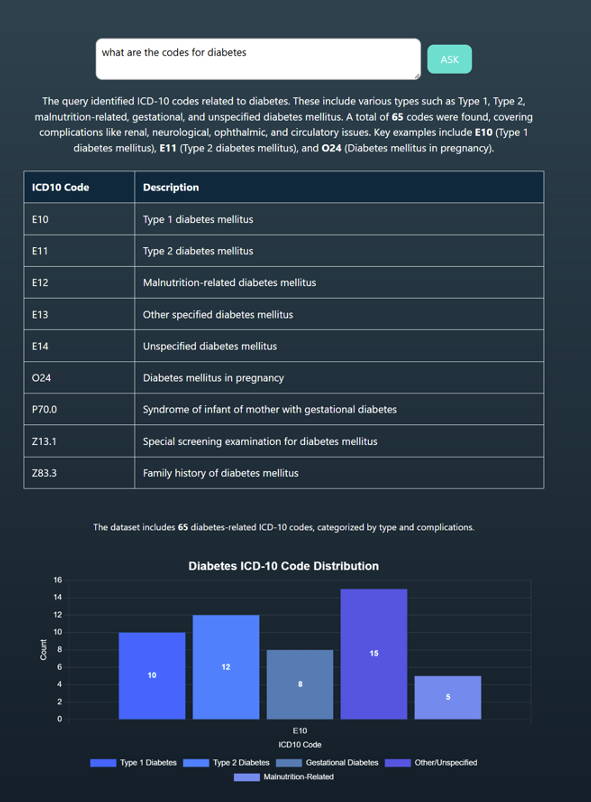
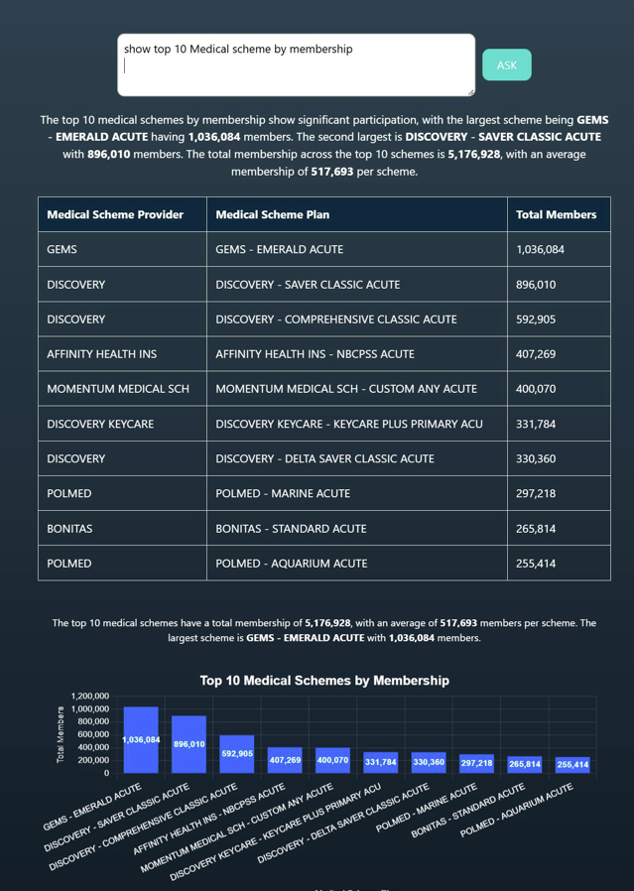
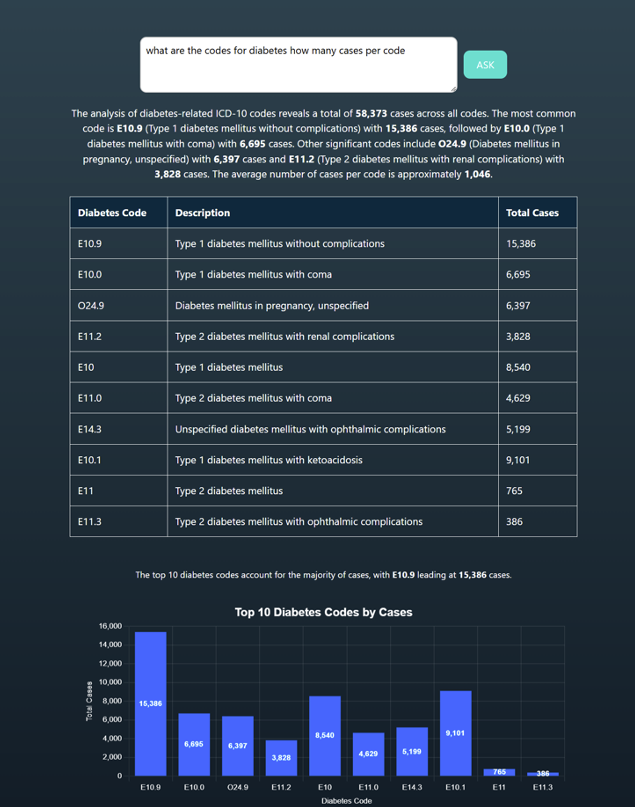
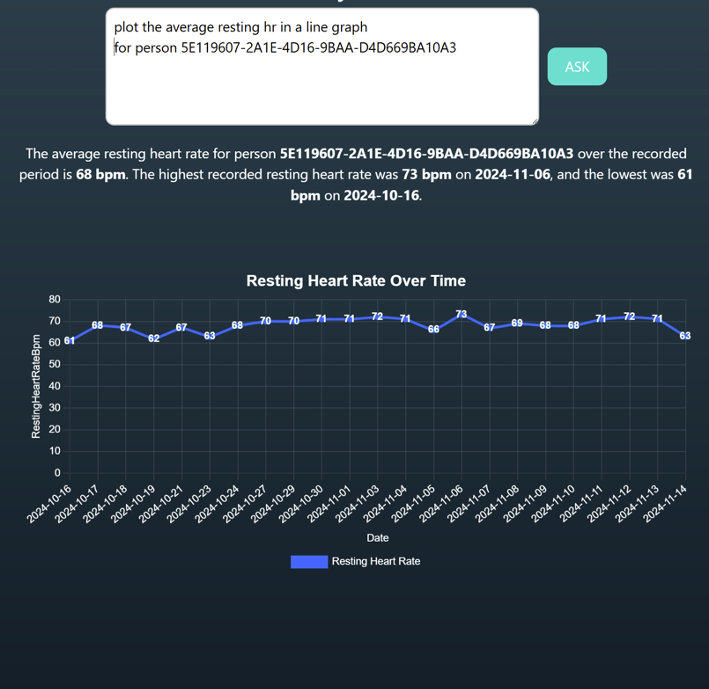
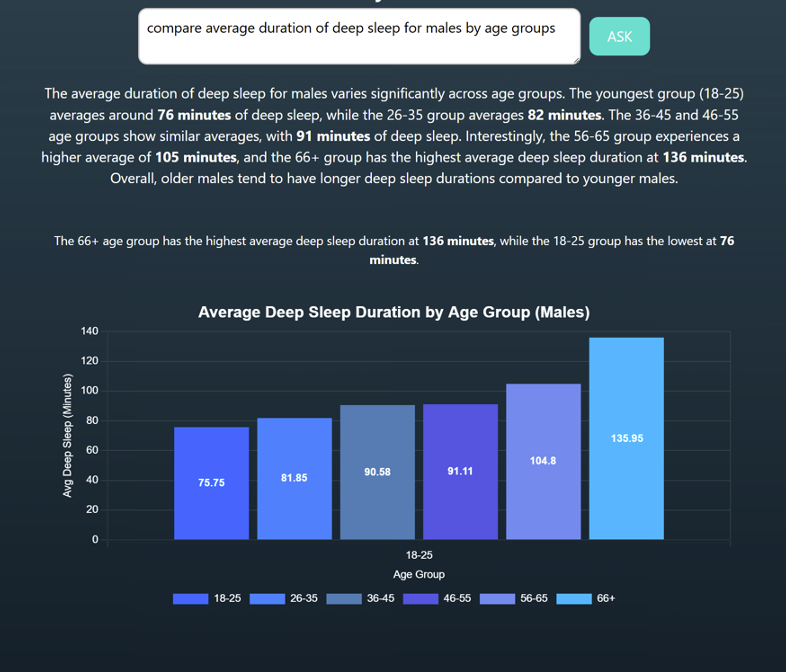
Expected Benefits
- Enhanced health reporting and analysis by simplifying graph generation and customer reporting.
- Improved efficiency with regards to health scoring and health underwriting.
- Optimized health management with real-time insights and trends analysis.
- Scalability to support multiple channels without modifying the core assistant.
Conclusion
This is an example of the innovative AI solutions SideKick Lab can develop to transform how businesses interact with complex and fragmented medical data across various sectors. By leveraging Natural Language AI, health stakeholders can drive enhanced health management efficiency, and future-proof their health strategy.
